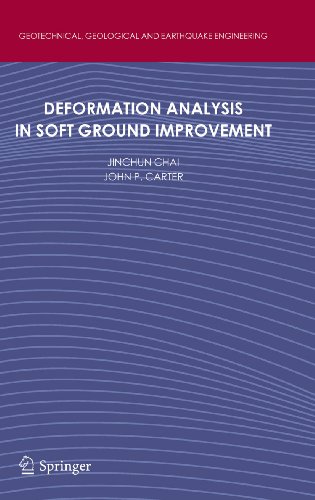

Most ebook files are in PDF format, so you can easily read them using various software such as Foxit Reader or directly on the Google Chrome browser.
Some ebook files are released by publishers in other formats such as .awz, .mobi, .epub, .fb2, etc. You may need to install specific software to read these formats on mobile/PC, such as Calibre.
Please read the tutorial at this link: https://ebookbell.com/faq
We offer FREE conversion to the popular formats you request; however, this may take some time. Therefore, right after payment, please email us, and we will try to provide the service as quickly as possible.
For some exceptional file formats or broken links (if any), please refrain from opening any disputes. Instead, email us first, and we will try to assist within a maximum of 6 hours.
EbookBell Team

4.3
68 reviewsThis book deals with the behaviour of soft ground improved by some of
the more common methods, including the installation of prefabricated
vertical drains (PVDs), or the installation of soil-cement columns
formed by deep mixing, or the preloading of soft ground by application
of a vacuum pressure in addition to, or instead of, a surcharge loading.
In particular, it describes the theories and the numerical modelling
techniques that may be applied to these soft ground improvement schemes
to estimate the immediate and time-dependent mechanical response of the
in situ soil. Particular emphasis has been placed on methods that
reliably predict ground deformations associated with ground improvement
techniques.
The book commences with a brief description of the
various ground improvement methods and then describes general techniques
for modelling the behaviour of soft clay subsoils by the finite element
method, as well as details of the methods for modelling soft soils
improved by the installation of PVDs. It also includes chapters
describing the theory of vacuum consolidation and methods for
calculating vacuum pressure-induced ground deformation, as well as a
theory which can be used to predict the response of soft ground improved
by the installation of soil-cement columns. An important distinguishing
feature of this book is the routine use of comparisons of predictions
of the proposed models with the results of laboratory studies, and
particularly field case studies, in order to validate the proposed
methods of analysis. The field case histories are from soft soil sites
at various locations around the world.
The book is directed
towards students of geotechnical engineering as well as geotechnical
practitioners. In the main it provides complete derivations of most of
the important theoretical results, as the intention was to write a book
that could be used as both a teaching text and a reference work for
students and practitioners.
Audience: The book is intended for geotechnical practitioners as well as for students.